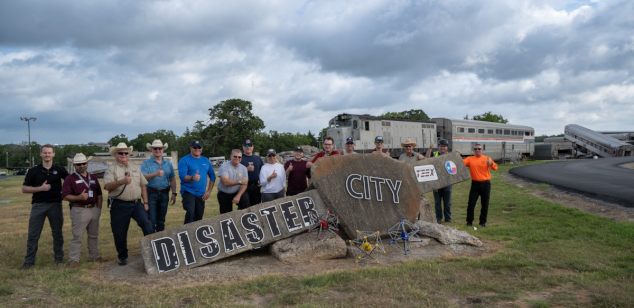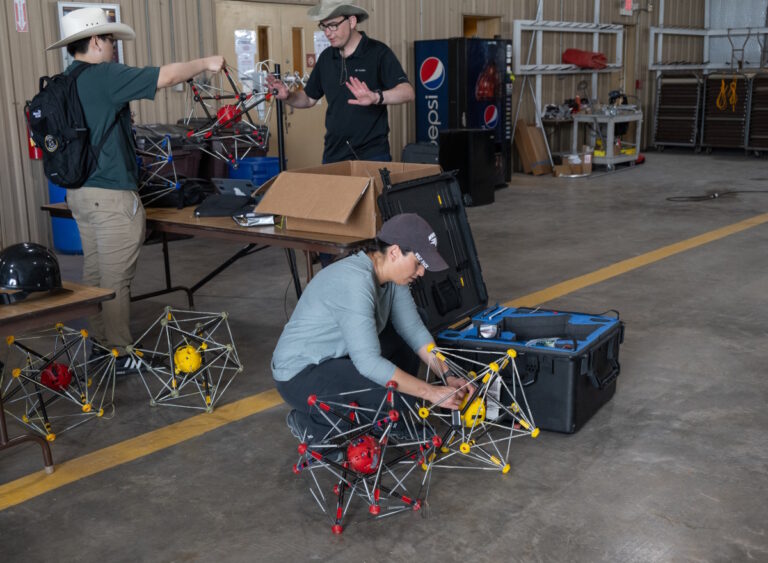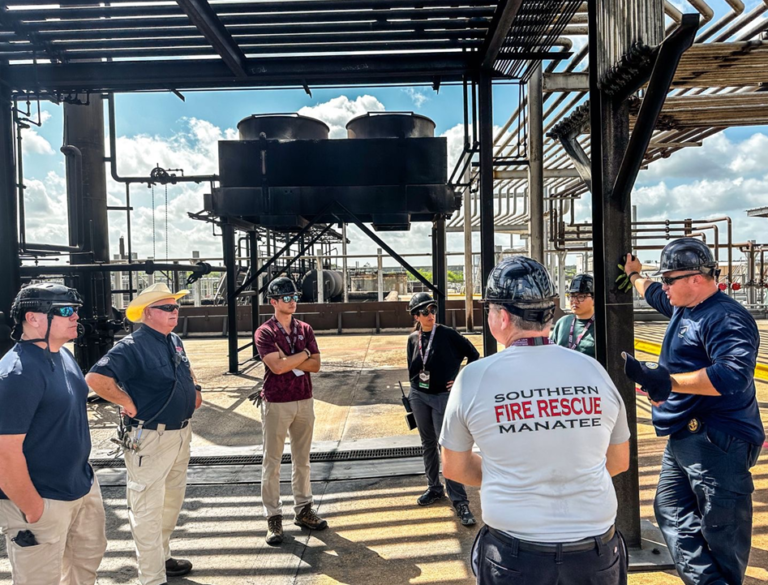
A three-person Squishy Robotics team has returned from almost a week of extensive testing assessing the resiliency of the communications of our sensors in operationally relevant environments at Texas A&M Engineering Extension Service (TEEX), Disaster City. This TEEX-tested effort was funded through our National Institute of Standards and Technology (NIST) – Public Safety Communications Research grant for continued user testing with our public safety partners Southern Manatee Fire & Rescue (SMFR), San Jose Fire Department (SJFD), and TEEX. agency
“For months, Squishy Robotics has been working closely with TEEX personnel to create detailed testing procedures and protocols for our robots and to determine the ideal training settings and props for testing at Disaster City,” Squishy Robotics COO Deniz Dogruer said. That preparation work was extremely beneficial.
“Using the planning work as a foundation, our engineering team performed preliminary equipment testing that focused on transmission ranges and radio interference issues.” Dogruer explained that this work culled out and reduced the number of communications devices, such as antennas and repeaters, for the multi-day testing activities in Texas. Preliminary testing was conducted at our own testing facilities at the Richmond Field Station as well as under an operationally relevant environment with our pilot partner, San Jose Fire Department, at the rubble pile located at SJFD Station 34. “Our engineers could make the best use of our reserved time at TEEX’s amazing training and testing facilities because we knew what equipment we wanted to assess and how best to structure testing so that we could gather the data that was needed.”
Testing was conducted at Disaster City, a 52-acre facility located in College Station (the site of the main Texas A&M University campus), as well as the new subterranean tunnel complex at Texas A&M-RELLIS. Both testing facilities provided authentic, real-world environments for the testing of emergency equipment. Testing scenarios, motivated by specific real-world use cases, were conducted in several matching environments including a refinery-like setting, storage tanks, a train derailment setting, and subterranean tunnels.
In addition to the ability to test in real world conditions, testing brought together several entities including TEEX Testing & Innovation Center (TT&IC), the Texas A&M Internet2 Technology Evaluation Center (ITEC), the Bush Combat Development Complex (BCDC), and Texas A&M Task Force 1 (TX-TF1) to enable testing that closely resembled real-world deployments. Finally, a panel of first responder and special operations subject matter experts, including members from our pilot partners SMFR and SJFD and the Harris County Fire Mashal’s Office, participated in the multi-day testing to provide guidance regarding ideal sensor placement for each testing event as well as product feedback during testing.
The results of the data communications testing will be shared with the public safety community in the coming months. Additionally, the TT&IC is preparing a TEEX-Tested® report assessing the data communications system’s functionality.
“Testing the data communications capabilities of our sensors in a variety of real-world environments at TEEX Disaster City and Texas A&M-RELLIS was invaluable to our efforts to continually improve our technology to meet the very challenging needs of first responders,” Dogruer said. “The multi-day testing—motivated by specific use cases and conducted in conjunction with the guidance and feedback from a panel of subject matter experts—provided a truly unique testing capability and will produce results that will be directly relevant to the public safety community.”
“It was a pleasure working with the Squishy Robotics team and the first responder panel,” said Ray Ivie, Director of TEEX Testing and Innovation Center (TT&IC). “Everyone’s goal was to provide realistic and challenging environments to fully test the capabilities of the communications system, ensuring future first responders have confidence in the gear and products that they are provided. I believe the data will support Squishy Robotics’ communications capabilities.”
A three-person Squishy Robotics team has returned from almost a week of extensive testing assessing the resiliency of the communications of our sensors in operationally relevant environments at Texas A&M Engineering Extension Service (TEEX), Disaster City. This TEEX-tested effort was funded through our National Institute of Standards and Technology (NIST) – Public Safety Communications Research grant for continued user testing with our public safety agency partners Southern Manatee Fire & Rescue (SMFR), San Jose Fire Department (SJFD), and TEEX.


